


Important Notice
Safety and Hazards
Limitation of
Liability
Rev 1.5 Jul.08
Preface
Due to the nature of wireless communications, transmission and reception of data can never be guaranteed. Data may be delayed, corrupted (i.e., have errors) or be totally lost.
Although significant delays or losses of data are rare when wireless devices such as the Sierra Wireless modem are used in a normal manner with a well???constructed network, the Sierra Wireless modem should not be used in situations where failure to transmit or receive data could result in damage of any kind to the user or any other party, including but not limited to personal injury, death, or loss of property. Sierra Wireless accepts no responsibility for damages of any kind resulting from delays or errors in data transmitted or received using the Sierra Wireless modem, or for failure of the Sierra Wireless modem to transmit or receive such data.
Do not operate the Sierra Wireless modem in areas where blasting is in progress, where explosive atmospheres may be present, near medical equipment, near life support equipment, or any equipment which may be susceptible to any form of radio interference. In such areas, the Sierra Wireless modem MUST BE POWERED OFF. The Sierra Wireless modem can transmit signals that could interfere with this equipment.
Do not operate the Sierra Wireless modem in any aircraft, whether the aircraft is on the ground or in flight. In aircraft, the Sierra Wireless modem MUST BE POWERED OFF. When operating, the Sierra Wireless modem can transmit signals that could interfere with various onboard systems.
Note: Some airlines may permit the use of cellular phones while the aircraft is on the ground and the door is open. Sierra Wireless modems may be used at this time.
The driver or operator of any vehicle should not operate the Sierra Wireless modem while in control of a vehicle. Doing so will detract from the driver or operator??s control and operation of that vehicle. In some states and provinces, operating such communications devices while in control of a vehicle is an offence.
The information in this manual is subject to change without notice and does not represent a commitment on the part of Sierra Wireless. SIERRA WIRELESS AND ITS AFFILIATES
SPECIFICALLY DISCLAIM LIABILITY FOR ANY AND ALL
DIRECT, INDIRECT, SPECIAL, GENERAL, INCIDENTAL,
CONSEQUENTIAL, PUNITIVE OR EXEMPLARY DAMAGES
INCLUDING, BUT NOT LIMITED TO, LOSS OF PROFITS OR
3


Trademarks
Contact
Information
Preface
AirCard?? and ???Heart of the Wireless Machine????? are registered trademarks of Sierra Wireless. Watcher?? is a trademark of Sierra Wireless, registered in the European Community. Sierra Wireless, the Sierra Wireless logo, the red wave design, and the red???tipped antenna are trademarks of Sierra Wireless.
Windows?? is a registered trademark of Microsoft Corporation.
QUALCOMM?? is a registered trademark of QUALCOMM Incorporated. Used under license.
Other trademarks are the property of the respective owners.
Consult our website for up???to???date product descriptions, documentation, application notes, firmware upgrades, trouble??? shooting tips, and press releases:

AirLink MP595 / MP595W Modem User Guide
Revision History




 Contents
Contents
MP Modem Manager . . . . . . . . . . . . . . . . . . . . . . . . . . . . . . . . . . . . . . . . 11

Contents
Step
Step
Step
Step
Step
Step
Turning the MP modem on and off . . . . . . . . . . . . . . . . . . . . . . . . . . . . . . . 33

Contents
Reset the MP modem to factory defaults . . . . . . . . . . . . . . . . . . . . . . . . . . . . . 49

AirLink MP595 / MP595W Modem User Guide
Configuring the MP Modem to Report GPS and I/O Data . . . . . . . . . . . . . . .51
GPS protocols and commands . . . . . . . . . . . . . . . . . . . . . . . . . . . . . . . . . . 52
Sending Data to Your Network Application . . . . . . . . . . . . . . . . . . . . . . . . . . . .61

Contents

AirLink MP595 / MP595W Modem User Guide
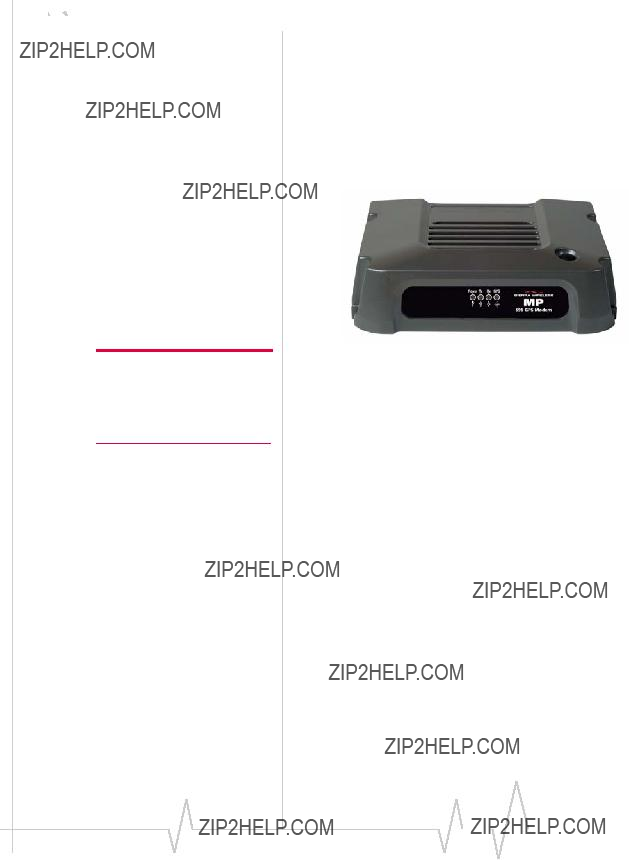



 1: Introducing the MP Modem
1: Introducing the MP Modem
???Software
Note: Do not connect the MP modem to a USB port on a computer before installing the software. (See ???Step
The Sierra Wireless MP modem provides a wireless network connection for portable computers in vehicles or offices.
If the MP modem is installed in a vehicle, it typically is mounted in the trunk and connected to a notebook computer in the passenger compartment. A radio frequency (RF) antenna mounted on the roof of the vehicle enables the MP modem to communicate through a wireless network to a host computer.
A built???in Global Positioning System (GPS) module provides location and heading data that can also be remotely monitored.
The MP modem has a rugged design that allows it to withstand the vibration, shock, humidity, and extremes of temperature experienced in the normal operation of police, emergency, utility, and field service vehicles.
You can use the network connection provided by the MP modem to access shared data, browse the Internet, and send and receive e???mail and text messages. The MP modem also allows for sensors, gauges, and alarms (such as panic buttons) to be installed in vehicles and remotely monitored from a central location.

AirLink MP595 / MP595W Modem User Guide
About CDMA
The MP modem operates over
???
???High Speed Downlink Packet Access (HSDPA) ??? up to 3.6 megabits per second (Mbps)
a type of wireless network called Code Division Multiple Access (CDMA). CDMA Third Generation (3G) technology provides a variety of connectivity features, depending on your service provider and account:
???1x Evolution???Data Optimized Revision A
(1xEV???DO Rev. A) supports Internet connections with data rates up to 3.1 Megabits per second (Mbps) downlink from the network and 1.8 Mbps uplink to the network. Average data rates are 450???800 kilobits per second (kbps) downlink and 300???400 kbps uplink. Actual speed depends on network conditions.
???1xEV???DO Revision 0 (Rev. 0) supports Internet connections with data rates up to 2.4 Mbps downlink and 153 kbps uplink. Average data rates are
???1x supports Internet connections with data rates up to 153 kbps. Actual speed depends on the network condi??? tions.
???Circuit switched (dial???up) data, using the earlier CDMA IS???95 specification, supports data connections to any dial??? up service at rates up to 14.4 kbps.
The MP 595 modem is primarily designed to provide 1x or better data connections but it also allows for Circuit Switched Data (CSD) connections in areas that have CDMA IS???95 coverage but no 3G (1xEVDO or 1x) high??? speed packet service.
Quick Net Connect (QNC) provides a simplified way to dial into an Internet connection using CSD, assuming CSD is supported by your service provider.
Once a connection is established, you can open your browser and connect to web sites and access other Internet services such as e???mail.
CDMA account and coverage
You must set up an account with a CDMA service provider for each MP modem you install. After installing the MP modem software, you must configure it to use an account.

Introducing the MP Modem
The ability of the MP modem to obtain service and the type of service obtained in any area is determined by several factors:
Network proximity and
Roaming If you are within the coverage of a network operated by a different service provider, your ability to obtain service depends on whether a roaming agreement exists between your service provider and the one operating your current local network. There may be additional fees for roaming service. Contact your reseller or service provider for information.
Account provisions Your account may restrict usage of certain networks or may limit your connection time or data transmission.
Supported CDMA radio frequencies
CDMA networks operate on two sets of radio frequency bands. The MP 595 modem is a dual???band product that operates on both bands:
???1900 MHz (also called the PCS, or Personal Communica??? tions Services, band)
???800 MHz (Cellular band)
Receive diversity
The MP 595 modem supports receive diversity for improved signal reception. Receive diversity uses two antennas to enhance the quality of the signal, but does not extend the MP modem???s coverage area.
Connection methods
You can connect the MP modem to a USB, Ethernet (RJ45), or serial (DB9) port on a computer. When connected to a USB or Ethernet port, the MP modem behaves like a network card.
When connected to a serial port, the MP modem behaves like a dial???up modem.

AirLink MP595 / MP595W Modem User Guide
The MP modem also supports connections via IEEE802.11b/g (MP595). See Chapter 6 for more details.
Virtual serial port
The MP modem supports four virtual serial ports (VSPs). Three are reserved for internal use by the MP modem. The remaining VSP, which is called Sierra Wireless Application Interface 2, is assigned to a specific COM port that varies between users. This VSP can be used, for example, to send AT commands, or to run applications such as HyperTerminal???.
Special MP modem modes such as GPS that are supported on a serial port are also available on the virtual port. For example, with the virtual port enabled, a mapping application on your computer that normally listens for GPS messages on a serial port listens for those same messages on the virtual port.
The MP modem VSPs are available on both USB and Ethernet interfaces. For information on enabling a virtual serial port, see the MP 3G Modems AT Command Reference manual (document #2130810).
VPN support for RNAP
This feature allows for the exchange of Remote Network Access Protocol (RNAP1) data between the MP modem and a remote server accessible only through a Virtual Private Network (VPN) connection. When using this feature, you must have 3G Watcher running on the computer.
The MP modem sends RNAP data over Ethernet or USB to 3G Watcher on the computer. 3G Watcher places the RNAP data in a User Datagram Protocol/Internet Protocol (UDP/IP) packet and sends it over the VPN connection to the server. When 3G Watcher receives a UDP/IP packet containing RNAP data over the VPN connection, it disassembles the packet and sends the RNAP data to the MP modem.
You can enable this option using 3G Watcher software or AT commands. See the 3G Watcher online help and the MP 3G Modems AT Command Reference manual (document #2130810) for details.
1.RNAP is a Sierra Wireless proprietary protocol that encapsu- lates the MTP data that is sent to and from the MP modem. It ensures that both the MP modem and remote host recognize the data packets. See The Monitoring and Tracking Protocol Guide on page 12.

Introducing the MP Modem
Software
The MP modem comes with the following software:
???3G Watcher, the software for the MP modem which allows you to manage and monitor your connections.
???The driver that forms the interface between the MP modem and your Windows operating system.
???The firmware that is stored in non???volatile memory.
The MP modem has an embedded radio module (a
Mini Card 5725), also made by Sierra Wireless, Inc. There are two firmware programs on the MP
The firmware was loaded into the radio module and con??? troller board when the MP modem was assembled. As new
versions of the software and firmware are released, they are posted at www.sierrawireless.com.
MP Modem Manager
MP Modem Manager is a web???based diagnostic and management tool that allows you to remotely monitor and configure a fleet of MP modems. With MP Modem Manager you can:
???Diagnose and troubleshoot field issues.
???Identify MP modem firmware versions and remotely upgrade firmware.
???Organize MP modems into groups for table viewing of modem and network status.
???Configure GPS settings.
MP Modem Manager software is available free of charge. To request this software, complete and submit the form at:
https://www.sierrawireless.com/product/ mp_modem_mgr_request.aspx.
Documentation
This User Guide describes how to:
???Install the MP modem hardware.
???Connect the radio and GPS antennas.
???Connect a notebook computer and other input/output (I/O) devices.
???Install the software.
???Configure the software to use a CDMA account.
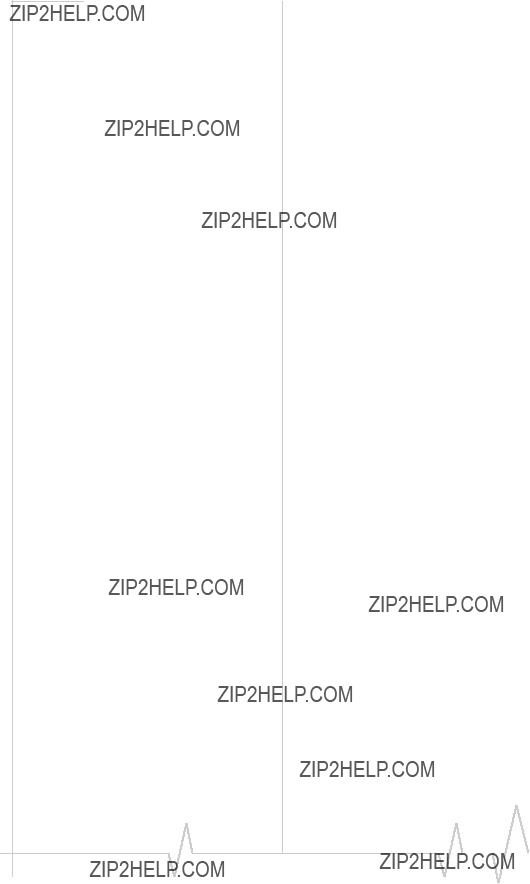
AirLink MP595 / MP595W Modem User Guide
???Interpret the LEDs on the MP modem and the indicators in the 3G Watcher software.
???Configure the MP modem to report GPS and/or I/O data (from sensors, gauges, or panic buttons).
???Use the MP modem to connect to a network.
???Collect and use GPS and I/O data from a fleet of vehicles in which MP modems are installed.
???Configure router functions.
???Configure WAP.
This User Guide is provided as a PDF (Portable Document
Format) file on the installation CD.
Online help is provided with 3G Watcher. It describes all the icons and indicators in 3G Watcher and provides detailed instructions on using 3G Watcher to make data connections. When using 3G Watcher, you can access help through the menu system or by pressing the <F1> key.
The MP 3G Modems AT Command Reference manual (document #2130810) describes the available AT command set.
The MP Modem Manager User Guide (document #2130554) provides information on how to install, configure, and use the MP Modem Manager software to manage a fleet of modems.
The Monitoring and Tracking Protocol Guide describes the protocols used in data transmissions between the MP modem and the network server. It provides the information necessary to develop host applications that process GPS and digital input
from a fleet of MP modems. For more information contact support@sierrawireless.com.




 2: Getting Started
2: Getting Started
This chapter provides:
???An overview of the installation process
???Information about the equipment you???ll need
???System requirements for the clients you want to use with the MP modem
???Planning considerations
Overview of installation steps:
???Plan the installation.
??Location
??Connection type
??Routing
???Ensure required equipment is available.
???Ensure the clients have the necessary system requirements.
???Install the hardware (MP modem, clients, antennas, cables).
???Install the power harness or AC/DC adapter.
???Connect the MP modem to the computer (if using cables).
???Install the software (Watcher and MP modem drivers).
???Configure your account.
???Configure networking options (if you are using the router functionality).
???Configure the wireless access point settings (if desired).

AirLink MP595 / MP595W Modem User Guide
Plan your MP modem installation
This section guides you through the decisions you need to make before you begin the installation.
Where do you want to install your MP modem?
The MP modem can be installed in a vehicle or in an office. The same installation steps apply with the following exceptions:
???If you are installing the MP modem in a vehicle:
??Use the power harness to connect the MP modem to the vehicle battery.
??Decide how to set the ignition sense option for powering the MP modem on and off (that is, depending on the ignition switch wiring, the MP modem can be turned on when the engine is started, when the ignition is in accessory mode, or independently of the ignition).
???If you are installing the MP modem in an office, an AC/DC adapter is available.
What type of connection(s) do you plan to use?
The MP modem is capable of the following kinds of network connections:
???Serial
???USB
???Ethernet
???Wireless Access Point via IEEE 802.11b/g (MP 595W only)
Data transfer rates vary, depending on the network, but note that the highest data rate using a serial connection is
115.2 kbps.
Before deciding which network interface to use, you need to understand the advantages and disadvantages of each, and any other implications of using one interface over another.

Getting Started
The following table summarizes the advantages and disadvan??? tages of the various interfaces:
a.The wireless access point interface is only available with the MP 595.
b.Note: If you enable a wireless access point or Ethernet interface after a USB connection has already been established, the USB connection is disabled.
You can switch between interfaces after the modem is installed and configured, but before doing so, you need to understand the interface hierarchy.
If you switch from a serial interface to any other interface, the serial interface is disabled. If you switch from USB to either a Ethernet or wireless access point, the USB connection is lost. If you switch from Ethernet to wireless access point (MP 595W modem only), the Ethernet connection is disabled.
Watcher is available for all network interfaces except wireless access point.
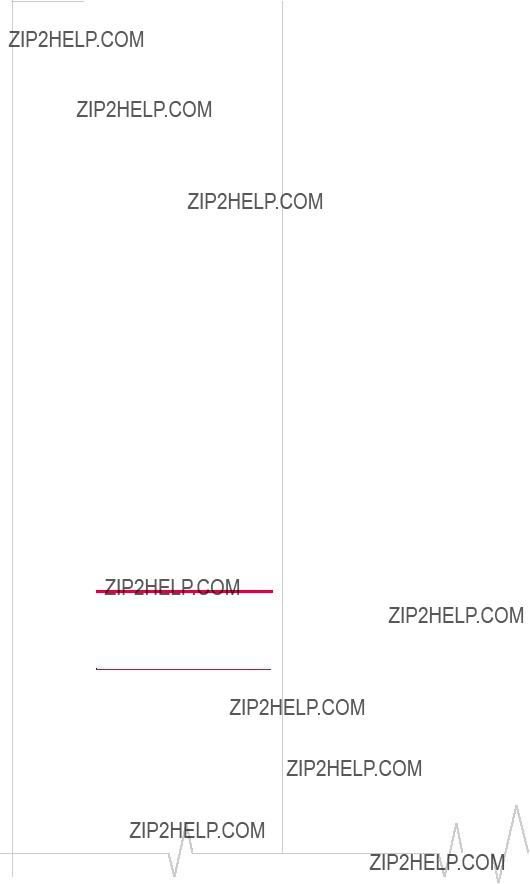
AirLink MP595 / MP595W Modem User Guide
Note: If GPS is being imple- mented, you require either two antennas or a combination Main RF and GPS antenna.
Required equipment
Package contents
Each MP modem box contains:
???The MP modem
???A mounting template
???Mounting screws and washers
???An installation and documentation CD
???A power harness
If any of these are missing, please contact your account manager.
Additional required equipment
To install the MP modem, you need the power harness (or existing MP 555 Series power harness), or an AC/DC adapter (for office installations), mounting template, and the screws and washers that come with the device.
You may also require:
???A USB, Ethernet, or 9???pin serial cable. This must be long enough to run from the mounting location of the MP modem to the computer.
??The maximum length for the serial or USB cable is 5.5 m (18 feet). The USB cable must have a Type A male connector at the computer end and a Type B male connector at the MP modem end.
??The Ethernet cable should have RJ???45 connectors. The MP modem???s performance is affected by the type of Ethernet card in the computer and the type of cable used. The minimum requirement for the Ethernet cable is an unshielded twisted pair (UTP) cable, category 3 or 4. For better performance, use a shielded, category 5 cable. The maximum length is 100 m (328 feet).
???Main Radio frequency antenna and cable. The antenna must have the appropriate regulatory approval, 50 ohm impedance, and a male TNC connector. It may be a hard or magnetic???mount antenna.
???Access Point antenna and cable. MP 595
???Additional Diversity RF antenna (optional). This is required if you use the receive diversity feature. The additional antenna must have a male SMA connector.
???GPS antenna and cable (optional). This is necessary if you use the built???in GPS module.
???Power supply. This is usually the vehicle???s battery.

Note: Do not connect the MP modem to a USB port on a computer before installing the software.
Rev 1.5 Jul.08
Getting Started
???Appropriate electrical grounding. If a ground wire is necessary, use a 16???gauge wire and connect it to a ground screw.
???I/O cable (optional). This is required if a panic button, sensor, gauge, or other I/O device is installed.
System requirements
Before you begin the installation, ensure your computer meets the following system requirements necessary for the instal??? lation and running of 3G Watcher software:
???Operating systems:
??Windows??? Vista???
??Windows XP (Home or Professional)
???Available USB, Ethernet, or DB9 serial port
???CD???ROM drive (installation only)
???32 MB RAM memory
MP modem accessories
For information about accessories for your MP modem???
including cables and
17

AirLink MP595 / MP595W Modem User Guide
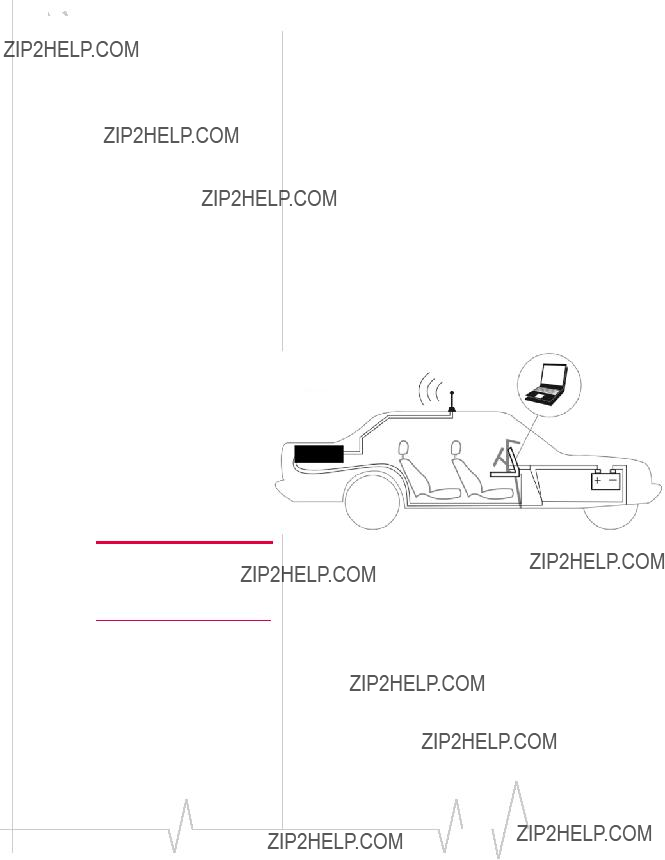



 3: Hardware and Software
3: Hardware and Software
Installation
??? Install the MP modem This chapter provides instructions for installing the MP modem, installing the 3G Watcher software, and activating your account.
The MP modem installation should be done by a professional.
Before you begin the installation, ensure that you have all the necessary components and equipment listed in ???Required equipment??? on page 16, and have read the ???Installation overview??? section below.
Installation overview
The MP modem may be installed in a vehicle (typically the trunk) and connected to a laptop computer mounted on the dashboard (as shown in the following illustration) or in an office.
Main RF/GPS antenna
MP modem
Note: The MP modem is designed for
Figure
MP modem housing
The MP modem has a rectangular metal housing. There is a connector panel on the rear, an indicator panel on the front of the housing, a reset button on top, and mounting holes along the bottom edges on either side.

AirLink MP595 / MP595W Modem User Guide
Diversity antenna (SMA)
Note: Electrical installations are potentially dangerous and should be performed by personnel thoroughly trained in safe electrical wiring procedures for vehicles.
Power harness (Molex connector)
Main RF antenna (female TNC)
Figure
GPS and I/O options
The MP modem provides support for GPS (Global Positioning System) and for attaching input/output devices.
GPS. If you plan to use the MP modem???s built???in GPS module, you must connect a GPS antenna using an antenna cable, or use a combination antenna that can connect to both the GPS and Main RF connectors on the MP modem housing.
Other I/O devices. Other devices, such as panic buttons, sensors, or gauges may also be installed with the MP modem and connected with an I/O cable to the I/O port. (See ???I/O port connections??? on page 31.)
Overview of installation steps
The installation process for the MP modem varies depending on how you plan to use it, where it best fits, and which of its features you plan to use. The main steps are:
1.Mount the MP modem.
2.Mount the antennas and connect the cables.
??Main RF antenna and cable
??Additional RF antenna and cable, if you plan to use receive diversity.
??GPS antenna and cable, if you plan to use GPS
??WAP antenna and cable (MP 595W only)
3.Connect the power harness.

Note: Power off the MP modem, your computer, and any other devices while you are connecting cables.
Rev 1.5 Jul.08
Hardware and Software Installation
4.Connect the cable that runs between the MP modem and your computer to the MP modem.
Do not connect the cable to the computer until you have installed the software.
5.Install the software.
6.Start 3G Watcher and activate your account.
7.Test the system.
Install the MP modem
Step
If you are using the MP modem in a vehicle, it is usually mounted in the trunk, but other possibilities are under the dashboard or a seat.
Select a location for the MP modem
When selecting a mounting location, remember the following:
???Do not expose the MP modem to weather and environ??? mental conditions beyond the ranges listed in the environ??? mental specifications on page 70. Avoid excessive heat from the engine compartment, heaters, or the exhaust system, and extreme cold from direct contact with air conditioners or other cooling systems. Never immerse it in any liquid.
???If you are replacing an MP modem, you can mount the new MP modem in the same location using the existing mounting holes.
???Every device connected to the MP modem, as well as the MP modem itself, should be grounded. (See ???Ground the MP modem??? on page 22 and ???Ground the power harness??? on page 28.)
???Route cables to their destinations without using excess wiring.
???Make sure all connectors and the reset button are easy to reach and the indicator lights are visible.
Mounting the MP modem
To mount the MP modem:
1.Use the provided mounting template to mark the location of the mounting holes.
2.Drill 5/32?? pilot holes (unless you are reusing holes from a previous MP modem mounting).
21

AirLink MP595 / MP595W Modem User Guide
3.Use the supplied mounting screws and washers to secure the MP modem through the holes along the edge of the case bottom.
Figure
Ground the MP modem
Note: Electrical installations are potentially dangerous and should be performed by personnel thoroughly trained in safe electrical wiring procedures for vehicles.
Automotive installations usually provide a good quality ground for each piece of electrical equipment. In most cases, ground the MP modem by connecting the black ground wire of the power harness to either the vehicle chassis or to the negative terminal of the battery.
If a device connected to the MP modem, such as a notebook computer, is not properly grounded, it may ground itself through the cable connecting it to the MP modem. This creates a hazard and could cause equipment damage. If you cannot properly ground a device, a potential solution is to install a fuse in the ground return wire.
The power harness has 5 A fuses on the red power wire and the white ignition sense wire, but not on the black ground return wire. (See ???Step

Note: Tighten cables connected to the MP modem by hand. Do not use tools.
Hardware and Software Installation
You can also use a ground screw on the connector panel of the MP modem. Use a 16???gauge wire if you choose to use a ground screw. A ground screw is not required as long as the power harness is properly grounded.
I/O
Power
If you are using a ground screw, insert it here.
Figure
Step
The MP 595 modem has two Main RF antenna connectors and one GPS antenna connector. The MP 595W has an additional RF antenna connector for an AP antenna. The MP modem requires an RF antenna to connect to the wireless network. The second RF connector is optional and allows for receive diversity.
The built???in GPS module requires a dedicated GPS antenna or a combination antenna with cables to both the Main RF and GPS antenna connectors on the MP modem.
If you already have an MP modem combination GPS antenna, you can re???use it with your new MP modem. This antenna has two
Main RF antenna
Use an approved Main RF antenna to connect to the wireless network. The antenna must have 50 ohms impedance and a cable with a TNC connector (or SMA connector if the antenna is being used for receive diversity), as well as the following characteristics:
???The total maximum gain, including cable loss, must not exceed 4.15 dBi (if the antenna operates on the PCS band) or 5.1 dBi (if the antenna operates only on the Cellular band).
???The antenna must transmit and receive on the necessary frequency bands in your coverage area. The MP modem supports these RF bands:

AirLink MP595 / MP595W Modem User Guide
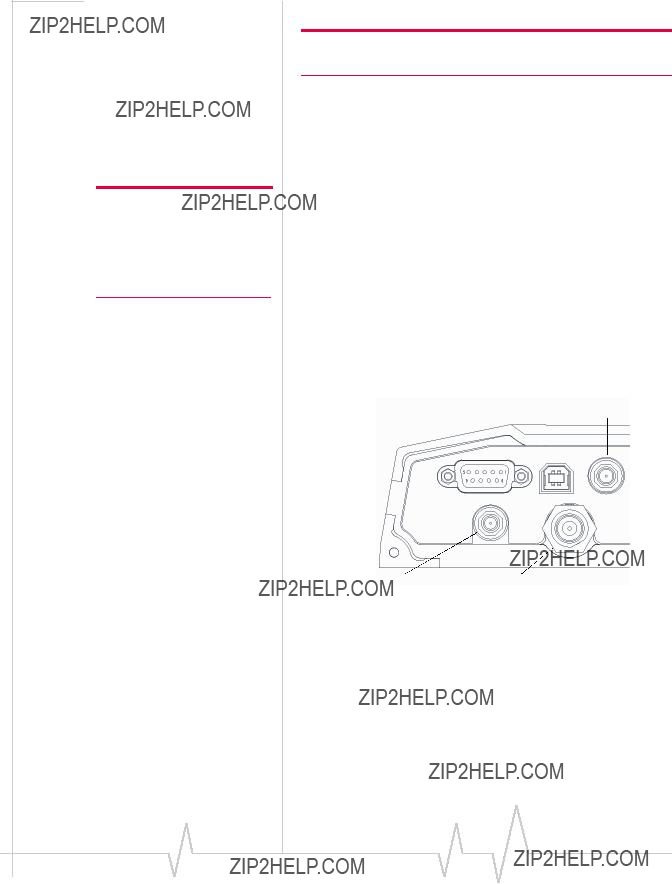
Note: To avoid RF interference problems and possible damage to the MP modem, do not power on the MP modem before connecting the Main RF antenna.
Rev 1.5 Jul.08
Hardware and Software Installation
Install the antennas and cables
Note: When connecting the cables,
To install the Main RF, GPS, and AP antennas:
1.Mount each antenna according to the instructions provided with it.
2.Thread the antenna cables to the MP modem. Secure the cables as necessary.
3.Connect the Main RF antenna cable to the TNC connector on the rear of the MP modem.
4.If you are using receive diversity, connect the diversity RF antenna cable to the diversity connector at the rear of the MP modem.
5.If you are using GPS, connect the GPS antenna cable to the GPS antenna connector on the rear of the MP modem.
6.If you are using WAP, connect the AP antenna cable to the AP antenna connector on the rear of the MP modem. (MP 595 only)
GPS antenna
Figure
The AP antenna must be installed by a professional and there must be a separation of at least 20 cm. between the AP antenna and the main RF antenna.
25

AirLink MP595 / MP595W Modem User Guide

Note: Do not install an on/off switch on the main (red) battery line, or connect the white ignition sense wire to the red battery wire. Both configurations bypass the MP modem's controlled shutdown sequence, and may cause data loss and subsequent
Rev 1.5 Jul.08
Hardware and Software Installation
Ignition sense on/off wiring
This section only applies to installing an MP modem in a vehicle. If you are installing the MP modem in an office building, use the AC/DC adapter.
The MP modem???s power on/off is controlled by the ignition sense line (white wire) using internal software, rather than a hard on/off switch on the red power line. The red, black, and white wires connect to the battery and ignition switch as shown in the power harness wiring diagram.
Note: The battery cable used for a car, truck, or other mobile connection must be less than 3 meters in length.
Vehicle battery
Figure
???When the white ignition sense line is pulled high (5 to 36 V), the MP modem powers on.
???When the ignition sense line is pulled low (less than 2 V), the MP modem performs a controlled shutdown sequence (under software control), de???registering and saving any relevant operational data before powering off.
Ignition sense options
There are three ways to connect the ignition sense wiring:
???Engine on only. Connect the white ignition sense wire to the vehicle???s ignition switch so that the MP modem is powered on only when the ignition key is switched to the full ???On??? position, that is, when the engine has been started. In this configuration, the engine must be running for the MP modem to be on.
???Accessory on. Connect the white ignition sense wire to the vehicle???s ignition switch so that the MP modem is powered
27

AirLink MP595 / MP595W Modem User Guide
Note: If you choose to install a separate switch, it must be connected to the white ignition sense wire, not the red battery wire, so that the MP modem can perform a controlled shutdown, as described on page 27.
Note: Ensure that all wires are correctly spliced or crimped. Improper grounding and wire connections may lead to equipment damage or safety hazards.
on when the ignition is switched to ???Accessory??? mode. In this configuration, the MP modem is on whenever other vehicle electrical devices can be switched
???Separately switched. Connect the white ignition sense wire to a separate switch mounted in a convenient location, which allows the MP modem to be turned on or off regardless of the position of the ignition key. In this configuration, the MP modem can be powered on or off even if the key is not in the ignition.
The MP modem also has a ???Power Off Timer???. When power is removed from the ignition sense wire, the MP modem remains on for the period defined by the Power Off Timer, up to a maximum of 240 minutes. The Power Off Timer is configured in 3G Watcher. See the online help in 3G Watcher for details.
Ground the power harness
You must connect the black ground wire from the power harness to the grounded negative terminal of the vehicle battery, or another appropriate electrical ground. Failing to ground the power harness properly may damage the MP modem, may cause radio interference, and can be dangerous. (See ???Ground the MP modem??? on page 22.) The ground wire in the MP modem power harness is not fused.
Power connections
Connecting the MP modem???s power wires properly is
Correct wire splicing
You can splice the wires of the power harness to the car wiring. Proper splicing is essential to reliable operation of the MP modem. Do NOT use ???quick taps???; they reduce the integrity of the wire that is cut and let moisture into the cable.
An appropriate method of splicing is to strip a small portion of the insulation, solder the wires together, then heat???shrink the connection to re???insulate it.
Crimp terminals
If suitable terminal connection points are available on the vehicle for power and ignition sense, then using automotive crimp terminals is recommended. When using crimp
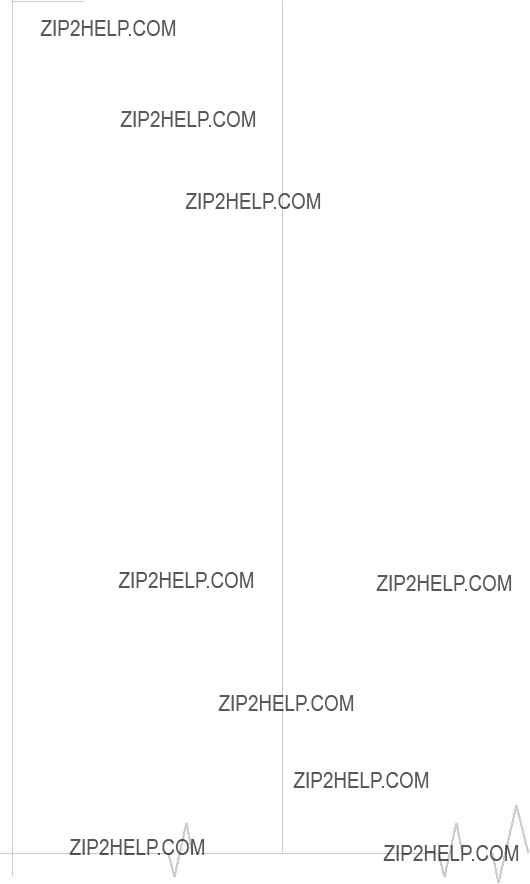
Hardware and Software Installation
terminals, do not leave bare wire exposed. Do not use a crimp terminal for more than one wire unless it is designed for that purpose.
Office installation
Use the AC/DC adapter available from Sierra Wireless to connect the power harness to a standard outlet.

AirLink MP595 / MP595W Modem User Guide
Serial connector (DB9) pinouts
The MP modem is configured as DCE (Data Communications
Equipment) and uses the standard RS232 pin designations:
DB9 MALE
1.Data Carrier Detect (DCD)
2.Transmitted Data (TxD)*
3.Received Data (RxD)*
4.Data Terminal Ready (DTR)
8.Request To Send (RTS)
9.Ring Indicator (RI)
*RxD and TxD are named with respect to the MP modem (that is, RxD is the Receive Data input to the MP modem, and TxD is the transmit data out of the MP modem)
USB Host
RF
Note: Ensure that the MP modem and your computer are powered off while installing cables.
Figure
The serial connector uses these voltage specifications:
Figure
Install the USB, Ethernet or serial cable
To install the USB, Ethernet, or serial cable, thread the cable through the vehicle and attach it to the USB, Ethernet, or serial connector on the MP modem.
Note: Do not connect the cables to the computer until you have installed the software. If you have an MP 595W and are planning on using a WAP connection, see ???Plan your MP modem installation??? on page 14 for more information.

Note: You must be logged in with administrative privileges to install the software.
Rev 1.5 Jul.08
Hardware and Software Installation
I/O port connections
The MP modem???s I/O port is a standard female DB15HD connector for remote monitoring of gauges, sensors, and alarms. If you are planning to use these devices, you need to create a custom I/O cable. See ???Configuring the MP Modem to Report GPS and I/O Data??? on page 51.
Step
Follow these steps to install 3G Watcher and the MP modem driver:
1.Ensure that the computer meets the necessary system requirements. (See ???System requirements??? on page 17.)
2.Close any Windows applications that are open on your computer.
3.Insert the MP modem CD in your CD???ROM drive.
The CD should automatically launch and display a menu. If not, select Start > Run from the Windows taskbar and type d:\index.html (where d is the drive letter of your CD???ROM drive).
4.From the CD start???up menu, select Install MP 3G Watcher to launch Installation.
5.Use the Next and Back buttons to navigate through the Installation window.
6.Close the browser. To close the CD start???up menu, select the taskbar button to re???display the window, then select exit in the lower right corner of the window.
7.Power on the MP modem and connect it to your computer. If you are using an Ethernet connection and your computer is connected via an Ethernet cable to a LAN, disconnect the computer from the LAN before connecting the MP modem to the computer.
To use the 3G Watcher, please refer to the 3G Watcher software section in Chapter 4.
Step
After you install the 3G Watcher software, you must set up (activate) your account. If you purchased the MP 595 modem directly from a service provider you may already have an account; your MP modem may be pre???activated.
The MP 595 modem allows you to configure two accounts.
31

AirLink MP595 / MP595W Modem User Guide
Note: If the version of firmware on your MP modem is not current with your version of 3G Watcher, you will be prompted to update your firmware when you launch the program. This update is important to ensure proper operation of your MP modem. The update may take as long as fifteen minutes.
The Activation Wizard
The Activation Wizard guides you through the process of setting up your account.
There are two methods of activation:
???Manual activation involves you phoning your service provider, exchanging information, and entering your account information into the appropriate fields in the wizard.
???Automated activation involves the MP 595 modem placing a call to a special number at the service provider. Much of the process is automated.
The wizard varies based on your service provider, and it may be that only one option is available to you.
To start the activation wizard:
1.Start 3G Watcher by choosing Start > Programs > Sierra Wireless > 3G Watcher> 3G Watcher, or double click the desktop shortcut.
2.If the wizard does not launch automatically, select Tools > Activation Wizard???.
3.On the first window, select the manual or automated activation option (if available) and select Next.
Manual activation
The wizard advises you of the information you need to complete the activation, and the phone number you should dial. Follow the instructions in the wizard to complete the process.
Automated activation
The wizard advises you of the information you need to complete the activation and dials the number. Follow the instructions in the wizard to complete the process.
Step
Finally, test the system to:
???Confirm that the MP modem can connect to and transmit data over the network.
???Confirm that the MP modem can determine its location (if you have connected a GPS antenna).




 4: MP Modem Operation
4: MP Modem Operation
Operating the MP modem requires some knowledge of both the MP modem hardware and the 3G Watcher software. This chapter describes the basics of each.
Turning the MP modem on and off
If the MP modem is installed in a vehicle, the way in which the MP modem is wired determines how it is powered on and off. In most cases the power supply for the MP modem is the vehicle??s electrical system and the MP modem is powered on and off in one of these ways:
???Engine on. The MP modem is powered only when the ignition is on. (The MP modem is only on when the engine is on.)
???Accessory on. The MP modem is powered when the ignition is switched to ??Accessories??. (This allows the MP modem to be powered when the engine is off.)
???Separately switched. The MP modem is connected to a separate on/off switch so that it can be turned on and off independently of the engine and vehicle accessories.
Rather than cutting power to the MP modem, the ignition key or power switch allows the MP modem to perform a controlled shutdown sequence that avoids data loss. (You can also set the MP modem to wait up to 240 minutes after the power switch has been turned off before it shuts down.)
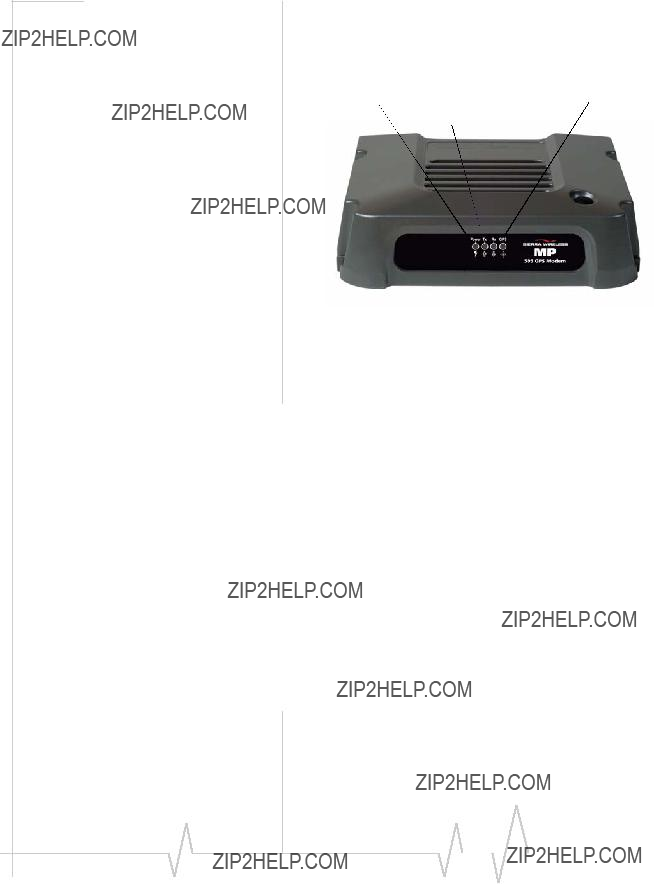
AirLink MP595 / MP595W Modem User Guide
Status indicators
The MP modem???s indicator panel includes four indicator lights.:
Figure
The following table shows the behavior of the LEDs during normal MP modem operation:
Table

Note: Depending on the operating mode, it may not be necessary to run 3G Watcher to use the MP modem, but it does provide useful status information.
MP Modem Operation
Reset the MP modem
The reset button for the MP modem is on the top of the housing.
To reset the MP modem, press the button until all four indicator lights illuminate. (Do not use sharp imple??? ments that might puncture the rubber.)
Resetting the MP modem is equiv??? alent to turning the MP modem off and on. This terminates any data connection and causes the MP modem to perform a self???test. (Stored settings are not lost.)
Figure
3G Watcher software
3G Watcher is the program used to manage and monitor the MP modem. For information about installing 3G Watcher, see ???Step
3G Watcher allows you to:
???Determine signal strength, roaming status, and other network connection parameters.
???Monitor the status of the MP modem and network services.
???Initiate data connections.
???Set 3G Watcher notification options.
???Configure the I/O ports.
???View GPS information.
3G Watcher Help
3G Watcher has a well???indexed and detailed online help system.
To access help in 3G Watcher, select Help > Help Topics or press the <F1> key.
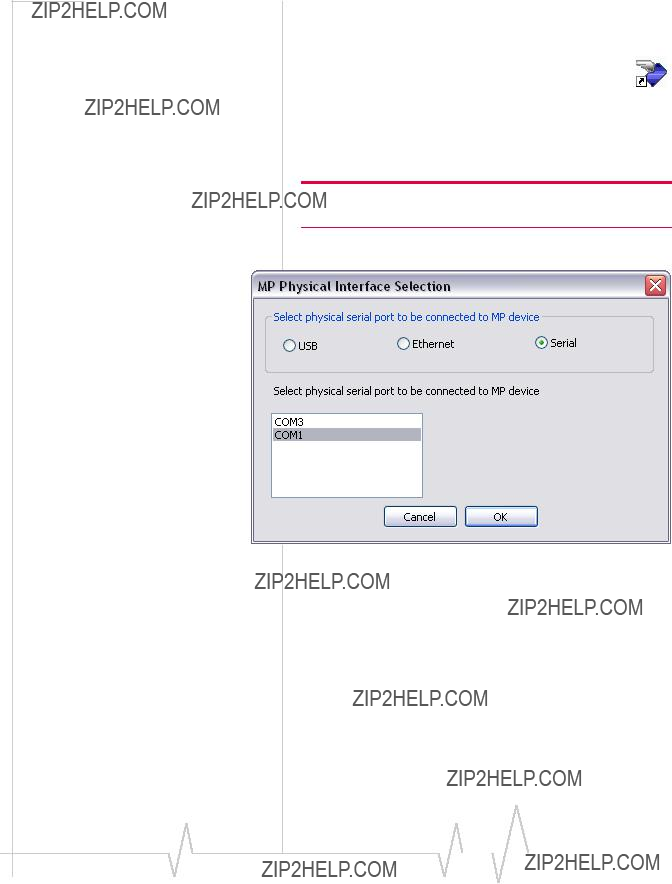
AirLink MP595 / MP595W Modem User Guide
Launching 3G Watcher
To launch 3G Watcher:
1.Start 3G Watcher by choosing Start > Programs > Sierra Wireless Inc > 3G Watcher > 3G Watcher, or double click the desktop shortcut.
Connection to MP Physical Interface
1.Go to Tools > MP Physical Interface
Note: MP Physical Interface shows disabled under Tools after the connection is established.
2.Select USB, Ethernet, or Serial.
Figure
3.If you select Serial, select the COM1 port.
4.Click OK
The interface availability for connecting will be subject to the usual interface priority of the MP.
Changing the Physical Interface
To change the physical interface:
1.Click on the Disconnect button, if the watcher is connected to your MP.
2.Go to Tools > MP Physical Interface

MP Modem Operation
Figure
3.Select USB, Ethernet, or Serial.
4.Click OK
Watcher closes, reopens and re???initializes itself.
3G Watcher window
The main 3G Watcher window includes a number of elements that let you control and monitor your MP modem and your connection to the network.
Connect button
GPS icon
Establishing connections
The connection drop???down list on the main 3G Watcher window provides a connection option(s) depending on your profile(s) for that Physical Interface:
???WWAN - Name of your service provider or connection type.
???DUN - Name of your service provider or connection type.

AirLink MP595 / MP595W Modem User Guide
Figure
You now have DUN connection.
Note: If you have a Windows operating system, you can put Watcher in to the Windows Startup folder, which will start when Windows launches.
If you also have DUN Autoconnect enabled, this will start the DUN Autoconnect when Windows starts.




 5: Configuring the Router
5: Configuring the Router
Functions
a. Note: Watcher is not available when using the WAP interface.

AirLink MP595 / MP595W Modem User Guide
In non???NAT configuration, you can connect only one client device, such as a computer to the MP modem, as shown in Figure 5???1.
In this mode, the IP address obtained from the external network is passed directly to the client device, which is why there can be only one client.
External
Network
Serial, USB, Ethernet, or WAP interface
Client device
IP:aaa.bbb.ccc.ddd
MP modem in
IP:aaa.bbb.ccc.ddd
Figure
NAT mode
In NAT mode, you can connect up to 10 devices to the MP modem using Ethernet connections and up to 10 additional devices using WAP.
In this mode, the IP addresses assigned by the MP modem to the client devices are private IP addresses. The MP NAT manages the translation of IP addresses and ports between the local and external networks.
The following illustration shows a sample network with 4 computers, two connected on an Ethernet LAN and two connected with WAP.


Configuring the Router Functions
Enable the router
The router features are enabled when NAT is enabled. By default, NAT is disabled. To enable NAT:
1.In Watcher, select Tools > Options > MP.
2.Under Network Settings, select Network Address Trans??? lation (NAT) and from the drop???down list select Enabled. The MP modem automatically resets in order for the change to take effect.
File and resource sharing over LAN
When NAT is enabled on the MP modem, its router capabil??? ities allow you to share files and resources such as printers, fax, etc. between computers on the LAN.
Static IP and TCP/UDP port forwarding in NAT mode
If desired, you have the option to set up static IP addresses and TCP/UDP port forwarding. The following sections describe these optional settings in more detail.
Set up static IP addresses
Static IP addresses are used to assign a predefined IP address to a specific client on the local network. The client is identified by its MAC address. When Static IP is used in conjunction with NAT port forwarding, it allows a server application to reside on the local network and receive unsolicited data/requests from a remote client on the external network.
Private IP addresses in the range 192.168.1.20 to 192.168.1.254 for Ethernet and 192.168.2.20 to 192.168.2.254 for wireless LAN are available for use as static IP addresses.
You can set up a maximum of 10 static routes, and these routes can apply to either an Ethernet or WAP interface. To set up static routing, you need to know the MAC address of the computers you want to configure.
To configure static routes:
1.Unlock the MP modem configuration. In Watcher, select Tools > AT Commands and enter the AT!MPCFGOPEN=??x??, where ???x??? is the password. (Default password is MP3G, e.g. AT!MPCFGOPEN=??MP3G??)
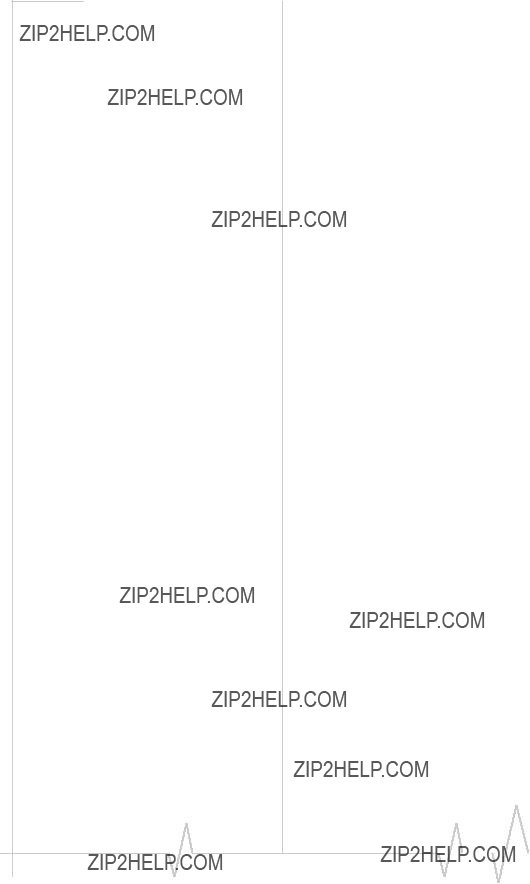
Configuring the Router Functions
2.In Watcher, select Tools > AT Commands, and use the AT!MPSTATICROUTE command to set up static routing. For more information, see the 3G MP Modems AT Command Reference manual (document #2130810).
3.Reset the modem. Select Tools > AT Commands, and use the AT!MPGRESET command to reset the MP modem.
4.Click OK.
Set up TCP/UDP port forwarding
Setting port forwarding on the MP modem causes it to forward unsolicited external IP packets with certain TCP or UDP Port IDs to specific IP addresses on the local network. If the IP addresses specified are static (that is, tied to a device??s MAC address), then the packets are always forwarded to specific devices. This is required when running a server application on the local network.
When port forwarding is set up, the MP modem routes specific UDP or TCP packets from the Internet to a specified port on a specific computer (or other device) on the local network.
To configure port forwarding:
1.Unlock the MP modem configuration. In Watcher, select Tools > AT Commands and enter the AT!MPCFGOPEN=??x??, where ???x??? is the password. (Default password is MP3G, e.g. AT!MPCFGOPEN=??MP3G??)
2.Select Tools > AT Commands and use the AT!MPPORTMAP command to configure the ports on the MP modem and the computer you want to direct the packets to. You will need to know the MAC address for the computer you want to configure. For more information, see the 3G MP Modems AT Command Reference manual (document #2130810).
3.Reset the modem. Select Tools > AT Commands, and use the AT!MPGRESET command to reset the MP modem.

AirLink MP595 / MP595W Modem User Guide
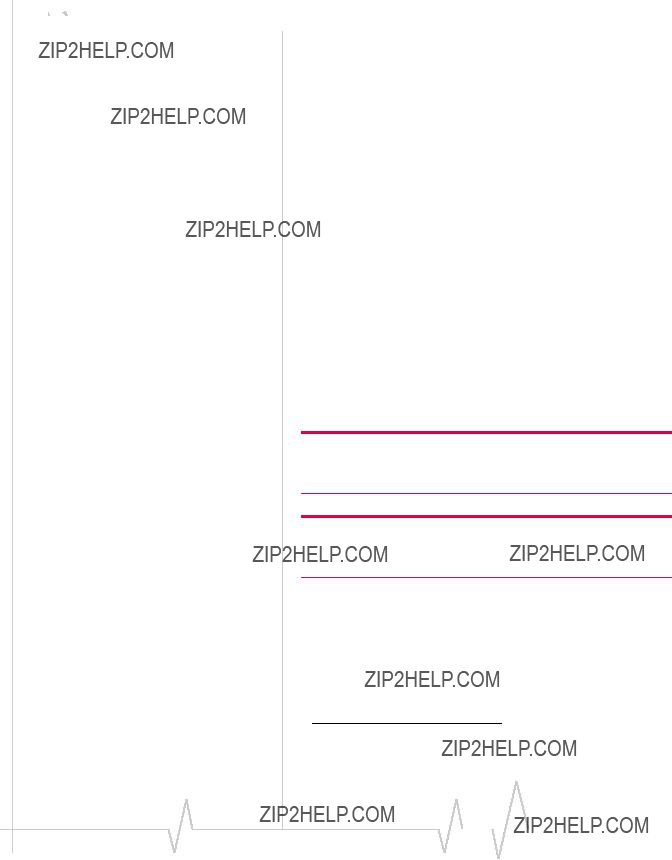



 6: Configuring the Wireless Access
6: Configuring the Wireless Access
Point
Optional:
???Change the password.
???Set the SSID.
???Set the security settings.
???Enable NAT, if applicable. (See Chapter 5 for details.)
Note: Watcher is currently not available over a WAP network. You can use Watcher over any Physical Interface to enable the WAP interface.
Note: If the
1.See Chapter 5 for information on enabling and configuring NAT mode.

AirLink MP595 / MP595W Modem User Guide
Note: When the modem is using a WAP connection, Watcher is available over Ethernet only.
Note: USB and DUN are disabled.
Unlock MP modem configuration
Before configuring the wireless access point and related fea??? tures such as security setting you need to unlock the MP modem configuration.
This setting is password protected. To unlock the MP modem configuration:
1.In Watcher, select Tools > Options > Wireless Access Point > Password > Current and enter the current password. (The default password is MP3G.)
The MP modem configuration remains open for about five minutes. If you encounter an error message while setting up the wireless access point parameters, you may need to reopen the configuration lock to continue setting the parameters.
Change the password (optional)
You can change the factory default password, but you should consider this carefully.
Note: If you change the password and forget the new password, before changing any of the
To change the password:
1.In Watcher, go to Tools > Options > MP > Wireless Access Point.
2.Under Password, select Set new password, and from the drop???down list, select Yes.
3.In the New password field, type the desired password. (It must be between 4 and 15 characters long.)
4.Click OK.

Configuring the Wireless Access Point
Enable the wireless access point
By default the wireless access point is disabled. To enable the wireless access point:
1.In Watcher, select Tools > Options > MP > Wireless Access Point > Current and enter the current password. (The default password is MP3G.)
2.Select Tools > Options > MP > Wireless Access Point.
3.Under Configuration, select the Enable Wireless Access Point field and from the drop???down menu, select Yes.
4.If you want to change more settings, proceed to the appro??? priate sections. Otherwise click OK to automatically reset the modem.
Set the SSID
Note: If you want to use Watcher to configure the SSID and security settings, connect the modem to the laptop via an Ethernet cable. Once the MP modem is configured, you can remove the Ethernet cable.
The SSID is the name of the network that appears in the list of computer network settings. The default SSID is in the format MPxxxW???FSN, where xxx is the model number and FSN is the factory serial number.
For example, MP 595???B452927000310.
There is no need to change the SSID, but you can if desired. If you have more than one MP modem and you are changing the SSID, be sure to assign a unique SSID to each MP modem.
To change the SSID:
1.Unlock the MP modem configuration. In Watcher, select
Tools > Options > Wireless Access Point > Password > Current and enter the current password. (The default password is
MP3G.)
2.Select Tools > Options > MP > Wireless Access Point.
3.Under Configuration, select the SSID / Network Name field and type in the desired SSID.
4.If you want to change more settings, proceed to the appro??? priate sections. Otherwise click OK to automatically reset the modem.

Configuring the Wireless Access Point
Configure the security settings
The network security settings on the computers (or other devices) on the network must match the security settings on the MP modem. Configure the security settings on the MP modem and then set the security settings on the computers on the network to match.
The MP modem offers the following security modes:
???Open (no security)
???WPA (Wireless Protected
???
???Open WEP (Wired Equivalent
???Shared WEP
By default, security is set to open (no security).
To select a security option:
1.Unlock the MP modem configuration. In Watcher, select
Tools > Options > Wireless Access Point > Password > Current and enter the current password. (The default password is
MP3G.)
2.Select Tools > Options > MP > Wireless Access Point.
3.Under Security, select the Security / Encryption Type field and from the drop???down list, select the desired security mode.
4.If desired, set the security key.
a.Under Security, select the Set New Network Key field and from the drop???down menu, select Yes.
b.In the New Network Key field, type the desired key. For WPA and WAP2, enter a string of 8 to 64 ASCII characters (Example: abcdefghij). For WEP, enter a string of 10 ASCII characters or 26 hex characters (Example: abcdefghij or 0123456789ABCDEF0123456789).
5.If you want to change more settings, proceed to the appro??? priate sections. Otherwise click OK to automatically reset the modem.

Configuring the Wireless Access Point
Configure security on the client computers
For each computer on the network, the network authenticity and data encryption must match the security settings used by the MP modem. Be sure to deselect the ???Key provided automatically (by server)??? option.
Reset the MP modem to factory defaults
You can reset the MP modem to the factory defaults using AT commands or using the reset button.
Note: It???s a good idea to have a record of the current settings before reverting to the factory settings.
To record the current settings:
1.In Watcher, select Tools > AT Commands and enter the AT!MPCFGDUMP?, AT!MPCFGDUMP?1 and AT!MPCFGDUMP?2 commands to generate a list of current settings.
To reset the MP modem to its factory default settings using AT commands:
1.Enter the AT!MPNVDEF command.
To reset the MP modem to its factory default settings using the reset button:
1.Watch the LEDs and follow this sequence:
a.Press and hold the reset button. The LEDs all turn red.
b.Release the reset button. The LEDs all turn green and then all go out.
When the LEDs all go out, repeat step a and step b until you have pressed the reset button three times.
After you release the reset button for the third time, all the LEDs turn green and then all go out. Then the two center LEDs (Tx and Rx) turn red. This indicates that the MP modem has restored the NV settings to the factory defaults. The LEDs then proceed with their regular start??? up sequence.

AirLink MP595 / MP595W Modem User Guide




 7: Configuring the MP Modem to Report GPS and I/O Data
7: Configuring the MP Modem to Report GPS and I/O Data
??? I/O device installation The MP modem is capable of reporting position and heading and configuration information using the embedded GPS module, as well as the
status of sensors, gauges, and alarms connected to the I/O (Input/Output) port. The MP modem is typically installed in a fleet of vehicles with the GPS and/or I/O data being sent to a central office or dispatch for processing.
This chapter describes how to implement local reporting of
GPS and I/O data. Chapter 8 describes how to configure your
MP modem to exchange data with your private network.
GPS configuration and reporting
GPS receivers use an array of orbiting satellites operated by the United States Department of Defense to triangulate their coordinates on the Earth???s surface. In order to use the GPS module in the MP modem, a GPS antenna must be connected to the MP modem. (The installation requires either two
For more information about GPS, see the Primer on GPS Opera???
tions (document #2130313) on the Sierra Wireless web site, www.sierrawireless.com.

AirLink MP595 / MP595W Modem User Guide
Note: The ???MP 3G Modems TAIP Reference manual??? (document #2130312) provides a description of the TAIP commands that can be used with the MP modem. This is available at www.sierrawireless.com. Information about Trimble GPS modules, including more documentation on TAIP commands, is available at www.trimble.com.
More information on NMEA message standards is available
at www.nmea.org.
GPS protocols and commands
The GPS module supports two methods of reporting naviga??? tional information, using either the TAIP (Trimble ASCII Interface Protocol) or NMEA (National Marine Electronics Association) protocols. The GPS module is pre???configured for TAIP. If you are using a GPS application that requires data to be reported according to the NMEA protocol, the MP modem must be reconfigured using an AT command. (See the MP 3G Modems AT Command Reference manual (document #2130810.)
NMEA is a reporting protocol only, while TAIP provides the ability to send commands to the module to query for infor??? mation and configure reports. When the MP modem is set for TAIP, commands can be sent to the MP modem in these ways:
???Using 3G Watcher
???Using AT commands
TAIP commands can be used to:
???Query the MP modem for its current position, heading, and speed
???Enable and disable automatic reporting of GPS data, and set the interval at which automatic reports are sent
???Configure the format of reports
GPS display in 3G Watcher
To view 3G Watcher???s GPS Display window, which reports latitude, longitude, speed, direction, altitude, and local and UTC time1, select Tools > Display GPS or double???click the GPS icon on the main 3G Watcher window.
From a cold start (where the MP modem is powered on with no stored navigational data), it may take up to 39 seconds for the GPS module to obtain satellite fixes and begin reporting.
1.UTC replaces Greenwich Mean Time as the basis for standard time throughout the world. UTC, which uses atomic measurements rather than the Earth???s rotation, is the equivalent of mean solar time at the prime meridian (0?? longitude).
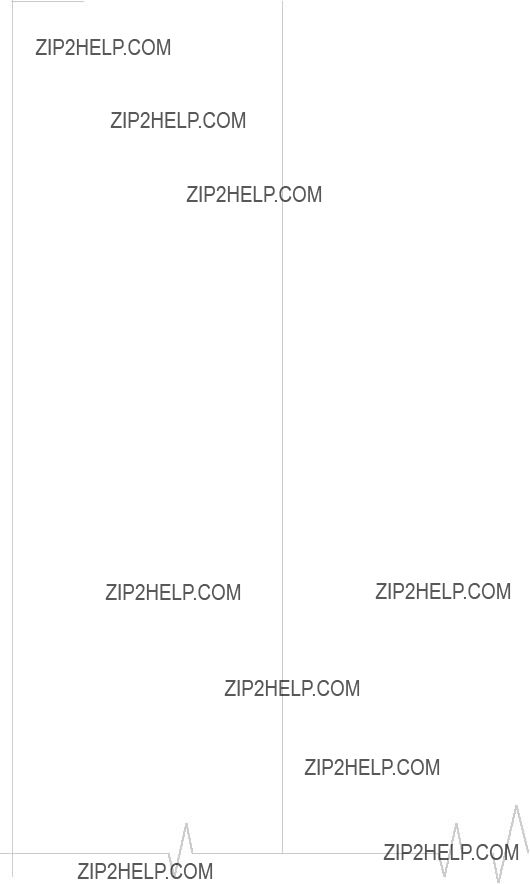
Configuring the MP Modem to Report GPS and I/O
Data
GPS TAIP quick reference
The following table is a quick summary of the TAIP message identifiers. For detailed information and message syntax, see the MP 3G Modems TAIP Reference manual (document
#2130312) and the GPS documentation on TAIP commands available at www.trimble.com.
I/O device installation and configuration
The I/O port on the MP modem allows for remote monitoring of gauges, sensors, and alarms. You can use this feature to display readings from instruments or gauges and to remotely monitor panic buttons or alarms.
This section describes how to connect and configure these I/O devices to work with the MP modem.
Connecting these devices requires that you make a customized I/O cable. The cable must have, at one end, whatever connector is required by the I/O device, and at the other end, the High Density DB15 connector. The cable wires must pin to the appropriate pin numbers on the I/O connector. The pinouts are described in the next section.
The maximum length of the I/O cable is 15 feet.

AirLink MP595 / MP595W Modem User Guide
Note: No more than 36 VDC should be applied to any I/O pins.
Before using the digital input/output lines, you must configure them as inputs or outputs.
Connector pinouts
The MP modem???s I/O port is a female DB15HD connector with eight active I/O pins:
???Two (2) digital I/O pins.
???Two (2) digital input pins.
???Four (4) analog input pins.
There are also six reserved pins and one ground pin.
DB15HD male cable
DB15HD female connector on rear of MP modem
1.
2.
3.Digital Input/Output 1
4.Digital Input 3
5.
6.
7.Analog Input 2
8.Analog Input 4
9.
10.Ground (GND)
11.Digital Input/Output 2
12.Digital Input 4
13.
14.Analog Input 1
15.Analog Input 3
Figure
Port specifications
See ???I/O port characteristics??? on page 72 for the technical specifications of the I/O ports, including input voltages.
Digital input devices
Digital input devices are those that have only two states and send a signal to the MP modem in one of those states. An example of a digital input device might be a gun rack alarm that sends a signal to the MP modem any time the gun rack is open. Another example would be a panic button that sends a signal to the MP modem when it is pushed.

Configuring the MP Modem to Report GPS and I/O
Data
A digital input can be connected to four of the pins on the DB15HD connector: Pins 3, 4, 11, and 12. (Pins 3 and 11 could alternatively be used for digital output.)
Note: Before using the input/output lines, you must configure them as inputs or outputs.
Typically a digital input device should be connected between
Ground (Pin 10) and the input port (Pin 3, 4, 11, or 12).
Figure
The pins report a logic high on an input of 3.45 VDC. An internal pull???up resistor provides a high condition when the switch is open.
The digital input pins report a logic low on an input between 0 VDC and 0.8 VDC. Sinking the input pin to ground yields a logic low (0x00) when the port is polled.
If you configure the MP modem to send data to a network server, digital input data can be remotely monitored.
Example: panic button connections
An I/O cable for a panic button requires a wire to one of the digital input or I/O pins (such as #3) and one wire to the Ground pin (#10).
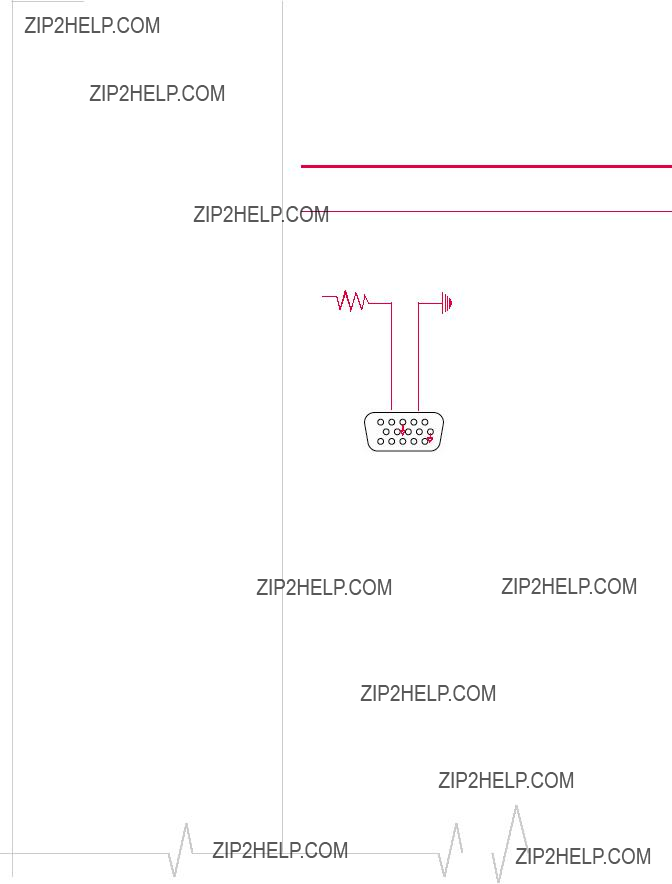
AirLink MP595 / MP595W Modem User Guide
Digital output devices
Digital output devices are those that have only two states and the state is controlled by a signal from the MP modem. Any device that is to be switched on and off from 3G Watcher would be installed as a digital output device.
A digital output can be connected to two of the pins on the DB15HD connector: Pins 3 and 11. (These can be used for either input or output.)
Note: Before using the input/output lines, you must configure them as inputs or outputs.
Typically a digital output device should be connected between
Ground (pin 10) and the output port (Pin 3 or 11).
Figure
The digital I/O ports provide open???collector output to a maximum of 500 mA.
Analog input devices
Analog input devices are those that generate a signal of varying voltage, based on the state of an instrument or gauge. An example of an analog input device might be a sensor that detects the vehicle???s speed.
An analog input can be connected to four of the pins on the
DB15HD connector: Pins 7, 8, 14, and 15.

Configuring the MP Modem to Report GPS and I/O
Data
Typically an analog input device should be connected between
Ground (pin 10) and the input port (Pin 7, 8, 14, or 15).
~
Figure
The analog input ports use a 10???bit (1024???step) analog???to??? digital converter over a range from 0 to 3.45 VDC, yielding a digital step resolution of 0.0032 V.
Example: analog sensor connections
An I/O cable for an analog sensor requires a wire to one of the analog input pins (such as #7) and one wire to the Ground pin (#10).
I/O configuration using AT or 3G Watcher commands
Once a sensor, gauge, button, or switch is physically connected to the MP modem, the MP modem must be configured to manage the input from, or output to, the device. This configu??? ration can be done using either AT commands or using 3G Watcher.
For a list of AT commands, please see the MP 3G Modems AT
Command Reference manual (document #2130810).
There are separate windows in 3G Watcher for configuring the analog and digital ports.
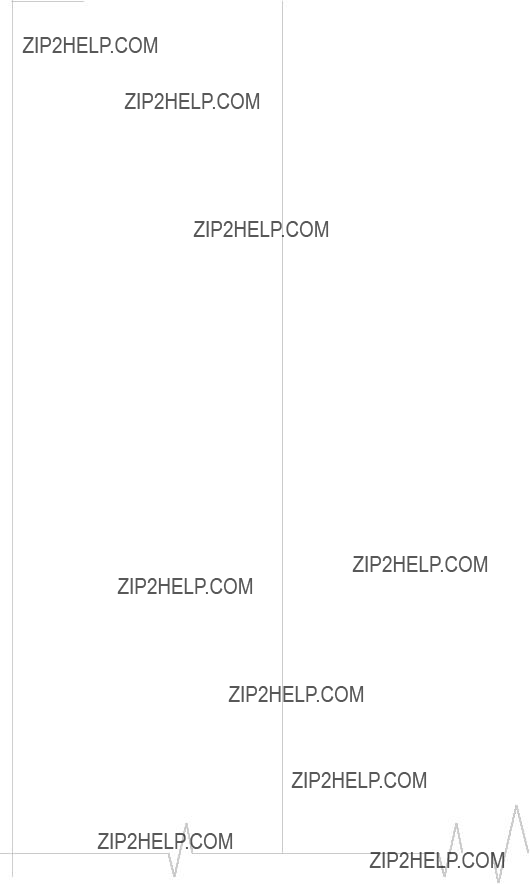
AirLink MP595 / MP595W Modem User Guide
Analog input setup
The Analog Input window (Tools > Options > MP > Input/Output) is used to configure devices on the four analog inputs. Each tab corresponds to a pin:
To configure an analog sensor or gauge, select the tab that corresponds to the pin you are using and complete the fields as follows:
???Label: Enter a description of the sensor or gauge (Measured Voltage, Vehicle Speed, etc.), up to 20 characters long.
???Raw value: Shows the analog value from the input (read??? only). The analog input has a 10???bit (1024???step) resolution, so the raw value range is between 0 and 1023.
???Zero scale: Enter the minimum value for the units you are reporting (used to convert the raw analog value of zero).
???Full scale: Enter the maximum value for the units you are reporting (used to convert the raw value of 1023).
???Current value: Shows the resulting converted value using the zero and full scales entered.
???Unit: Specify the units of the input (volts, km/h, etc.), up to 20 characters long.
Example
If you are measuring temperature, and the thermometer you have connected to the I/O connector measures between ???30 (raw value 0) and +50 (raw value 1023) degrees Celsius, then your zero scale is
The measurements are calculated for the 81???degree range (between ???30 and +50), which is divided into 1024 steps (0.0791 degrees per unit step). A reading of 25 degrees
(56 degrees above the minimum) would therefore show a raw value of 708 (56 degrees/0.0791 degrees per unit).

Configuring the MP Modem to Report GPS and I/O
Data
Digital I/O setup
The Digital Input/Output window (Tools > Options > MP > Input/Output > Digital I/O) is used to configure devices on the two digital I/O and two digital input ports. Each tab corresponds to a pin:
To configure a digital sensor or gauge, select the tab that corre??? sponds to the pin you are using and complete the fields as follows:
???Label: Provide a description of the sensor or gauge, up to 20 characters in length.
???Type: Select Input, Output, or Not used. (Output is not available on tabs 3 and 4.)
???Logic low name: Describe the state of the device at logic level low, up to 20 characters in length. (For example, if a switch in the off position leads to a logic low, you could choose to label it Switched Off.)
???Logic high name: Describe the state of the device at logic level high, up to 20 characters in length (such as Switched On).
???Alarm logic level: Assign an action associated with the I/O port:
??high: A notification is sent, and the event is logged, if the state changes from a logic low to a logic high.
??low: A notification is sent, and the event is logged, if the state changes from a logic high to a logic low.
??log only: No notification is sent, but any change in logic level is logged.
The name and location of the log file is specified in the Input/Output window (Tools > Options > MP > Input/Output). By default, the log file is located in the program folder or user folder and is called MpIoLog.txt.
???Current value: Shows the current value of the port.

AirLink MP595 / MP595W Modem User Guide




 8: Sending Data to Your Network Application
8: Sending Data to Your Network Application
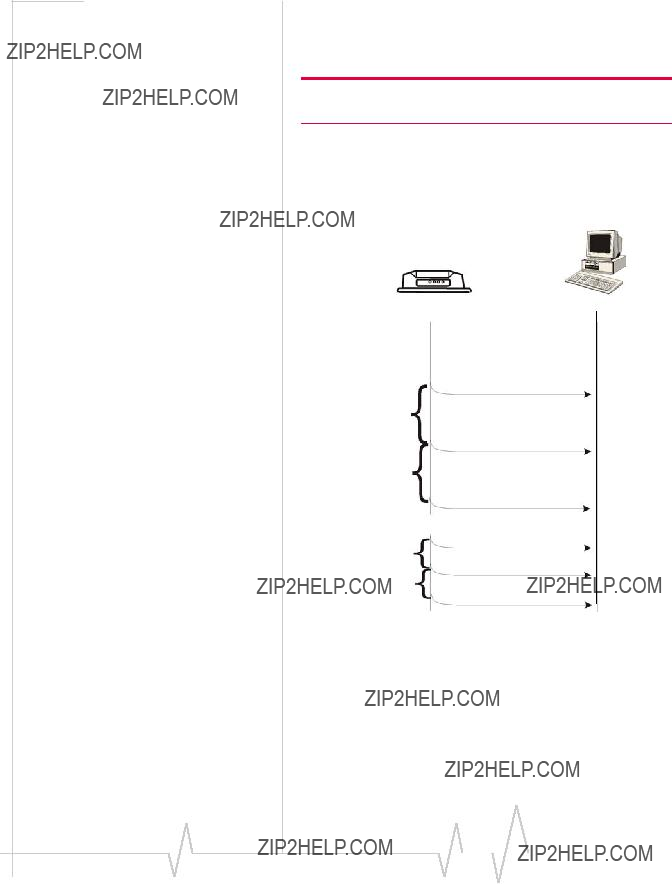
AirLink MP595 / MP595W Modem User Guide
The fast rate timer only becomes active when an alarm condition is triggered by a rise or drop in the level of one of the digital I/O channels. The default for the fast rate timer is three seconds.
Note: When the fast rate timer is set to 0, a single report is sent when an I/O alarm is triggered.
If the GPS timer is set to a value other than 0, it controls the frequency of reports in the absence of any alarm or event triggers. (However, if the GPS timer is set to a longer interval than the low rate timer, the value for the low rate timer will determine report frequency.)
Fast rate timer = 3 seconds
Low rate timer = 5 minutes
GPS timer = 10 seconds
TM_SUM_REG_IND
10 seconds
TM_SUM_REG_IND
10 seconds
TM_SUM_REG_IND
Digital I/O alarm
TM_SUM_REG_IND
3 seconds
TM_SUM_REG_IND
3 seconds
TM_SUM_REG_IND

Note: The ???MP 3G Modems TAIP Reference manual??? (document #2130312) provides a description of the TAIP commands you can use. This is available at www.sierrawireless.com. Information about GPS modules, including more documentation on TAIP commands, is available
at www.trimble.com.
Sending Data to Your Network Application
If the GPS timer is set to 0, the reporting interval is determined by the configuration of the GPS module. If the module is configured for TAIP, you can issue TAIP commands to change the interval. An advantage of configuring the report frequency with TAIP commands is that the interval between reports can be based on elapsed time and/or distance travelled.
You can issue TAIP commands to the module locally through 3G Watcher using the AT command AT!MPGPSCMD. They can also be sent remotely using MP Modem Manager. (See ???MP Modem Manager??? on page 11.)
Reporting configurations set by sending TAIP commands will be erased if the MP modem is powered off unless the commands are included in the initialization strings for the MP modem. These are executed each time the MP modem is powered on. You can configure them locally by using 3G Watcher (Tools > Options > GPS) or the AT command AT!MPGPSINIT, or remotely with MP Modem Manager.
Low rate timer = 5 minutes Fast rate timer = 3 seconds GPS timer = 0 seconds TAIP report frequency =
every 200 meters or 10 seconds
TM_SUM_REG_IND
10 seconds
TM_SUM_REG_IND
200 meters
TM_SUM_REG_IND
200 meters
TM_SUM_REG_IND
Digital I/O alarm
3 seconds
TM_SUM_REG_IND
TM_SUM_REG_IND
3 seconds
TM_SUM_REG_IND

AirLink MP595 / MP595W Modem User Guide
Note: More information on NMEA message standards is available at www.nmea.org.
If the module is configured for NMEA, data is sent at five??? second intervals. (The interval cannot be changed when the module is configured for NMEA because NMEA is strictly a reporting protocol.)
Monitoring and Tracking configuration
You can use 3G Watcher to configure the MP modem to send MTP data to a network server:
1.Select Tools > Options > MP > Monitor and Tracking and complete the appropriate fields.
???or???
1.Issue the AT command AT!MPMTCONF along with the required parameters.
IP Addressing
To send data to the MP modem, a host application on a network server requires the IP address of the MP modem. Service providers usually do not provide a static IP address to each device on the network. The IP address is dynamically assigned each time the MP modem registers on the network. This means that the host application must identify each MP modem by its Unique Mobile Device ID (discussed on page 66) and capture its IP address as it registers.
If the MP modem has a public IP address, the host application can simply check the IP address on the incoming data packets to determine the IP address of the MP modem. However, if NAT (Network Address Translation) is in use, the IP address assigned to the MP modem is likely to be a private IP address. This may present problems, as discussed in the next section.
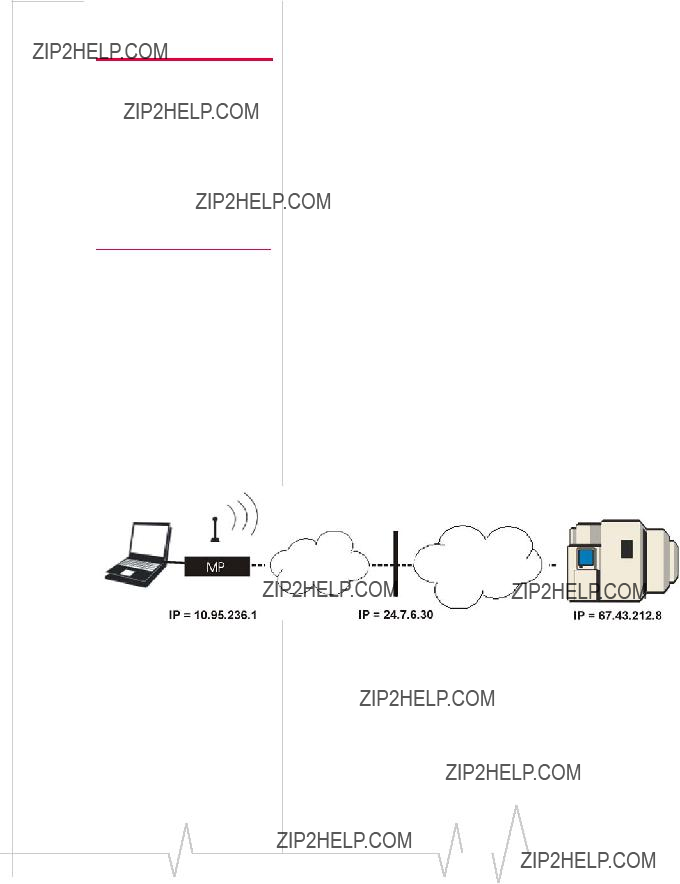
Note: A similar problem may occur if NAT is in use on your network. The host application may reside on a server that has a private IP address. You must configure the MP modem to send data to a server on your network with a public IP address, and configure the server to recognize the MTP data and route it appropriately.
Sending Data to Your Network Application
The problem created by Network Address Translation
Many service providers use NAT (Network Address Trans??? lation) which effectively creates a firewall in front of the network. Inside the network, the service providers assign private IP addresses to registered devices, since public IP addresses are not needed to route data within the network. (This saves the service provider the expense of having a large pool of public IP addresses.) A public IP address is substituted for the private IP address when data packets pass through the gateway between the network and the Internet. This public IP address might be used on data transmissions from many different devices. Therefore, the network server is only aware of the substituted public IP address. If the server replies to this address, the network cannot identify the device for which the data was intended.
Assume, for example, an MP modem is registered on a network. The MP modem is assigned a private IP address of 10.95.236.1. When the MP modem sends MTP data to the network server, a public IP address of 24.7.6.30 is substituted at the gateway to the Internet. When the network server receives the data, the host application is only aware of the public IP address, 24.7.6.30. However, if the network server sends data back to the IP address 24.7.6.30, the network has no way of identifying the MP modem for which it is intended and is unable to route the data appropriately.
Firewall
Figure

AirLink MP595 / MP595W Modem User Guide
Note: NetMotion Wireless, Inc. develops
Note: See ???MP Modem
Solutions to the NAT problem
If your service provider is using NAT, it is best to work with the provider in devising a solution. Some service providers offer, on request, accounts with public IP addresses. (There may be additional charges for this.)
Another solution is to implement a frame relay connection between your network and your service provider???s network. The frame relay connection bypasses the address translation, and is a method of overcoming NAT issues encouraged by some service providers.
Firewall
Frame relay
Retrieve the Unique Mobile
Device ID
In order to associate GPS and I/O data with a particular vehicle, you must create a database on your server that links each MP modem???s Unique Mobile Device ID to the vehicle in which it is installed. The Unique Mobile Device ID is a number derived from the ESN (Electronic Serial Number).
Use the AT command ATI4 to obtain the Unique Mobile Device ID from each MP modem you deploy.
You may also want to assign a device name to the MP modem that identifies the vehicle in which it is installed. You can assign this name locally using 3G Watcher or remotely using MP Modem Manager. The device name is included in the MTP data sent to the network server.




 9: Support and Warranty
9: Support and Warranty
Technical support
To obtain technical support for your MP modem, and firmware and software upgrades, please contact your account manager.
Online technical support resources are also available at
Warranty
Sierra Wireless, Inc. warrants the MP modem against all defects in materials and workmanship for a period of three (3) years from the date of purchase.
The sole responsibility of Sierra Wireless, Inc. under this warranty is limited to either repair or, at the option of Sierra Wireless, Inc., replacement of the MP modem. There are no expressed or implied warranties, including those of fitness for a particular purpose or merchantability, which extend beyond the face hereof.
Sierra Wireless, Inc. is not liable for any incidental or conse??? quential damages arising from the use, misuse, or installation of the MP modem.
This warranty does not apply if the serial number label has been removed, or if the MP modem has been subjected to physical abuse, improper installation, or unauthorized modifi??? cation.

AirLink MP595 / MP595W Modem User Guide
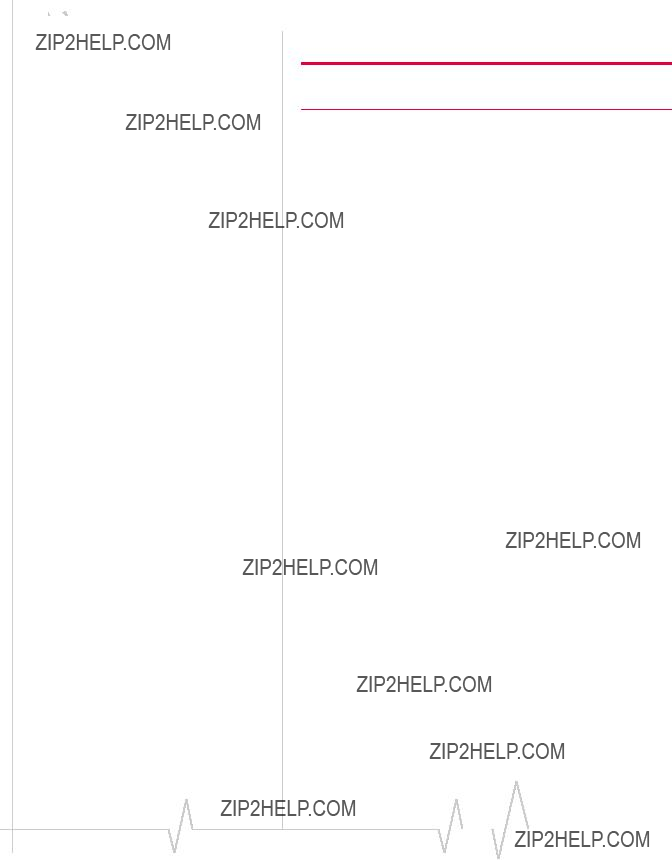



 10: Technical Specifications
10: Technical Specifications
This chapter provides technical data for the MP 595 modem.
Note: The technical specifications are subject to change without notice.
Regulatory, radio frequency and electrical specifications
a.This applies to a typical installation with a

AirLink MP595 / MP595W Modem User Guide
Environmental specifications
Weight and dimensions

Other interfaces
GPS specifications

AirLink MP595 / MP595W Modem User Guide
I/O port characteristics
3G Watcher software
Wireless access point specifications

Technical Specifications

AirLink MP595 / MP595W Modem User Guide




 11: Regulatory Information
11: Regulatory Information
Note: Unauthorized modifica- tions or changes not expressly approved by Sierra Wireless, Inc. could void compliance with regulatory rules, and thereby your authority to use this equipment.
Canada
To ensure that the MP modem meets Health Canada???s Safety Code 6 requirements, a separation distance of at least 20 cm (8 inches) must be maintained between the modem???sMain RF antenna and the body of the user and any nearby persons at all times and in all applications and uses.
Additionally, the maximum antenna gain in the PCS band, including cable loss, must not exceed 4.15 dBi, and in the Cellular band, must not exceed 5.1 dBi, to comply with Industry Canada and Health Canada regulations limiting both maximum RF output power and human exposure to RF radiation.
For the MP 595 modem, the maximum gain for the AP antenna must not exceed 3 dBi, and the AP antenna must be at least 20 cm away from the Main RF antenna.
U.S.A.
To comply with FCC regulations limiting both maximum RF output power and human exposure to RF radiation, the maximum antenna gain, including cable loss, in the PCS band, must not exceed 4.15 dBi, and in the Cellular band, must not exceed 5.1 dBi.
The Main RF Main RF antenna must be mounted such that there is a separation distance of at least 20 cm (8 inches) between the Main RF antenna and the body of the user or any nearby persons.
For the MP 595 modem, the maximum gain for the AP antenna must not exceed 3 dBi, and the AP antenna must be profes??? sionally installed with a separation distance of at least 20 cm away from the Main RF antenna, per FCC Part 15 require??? ments.

AirLink MP595 / MP595W Modem User Guide
Note: This equipment has been tested and found to comply with the limits for a Class A digital device, pursuant to Part 15 of the FCC Rules. These limits are designed to provide reasonable protection against harmful interference when the equipment is operated in a commercial environment. This equipment generates, uses, and can radiate radio frequency energy and, if not installed and used in accor- dance with the instruction manual, may cause harmful interference to radio communications. Operation of this equipment in a residential area is likely to cause harmful interference in which case the user will be required to correct the interference at his own expense.
Important Note
To comply with FCC RF exposure compliance requirements, the antenna used for the WiFi transmitter must be installed to provide a separation distance of at least 20 cm from all persons and must not be co???located or operating in conjunction with any other antenna or transmitter.???
FCC Caution
Any changes or modifications not expressly approved by the party responsible for compliance could void the user??s authority to operate this equipment.
Approved antennas
The WiFi antennas approved for use with this device must be of either a PCB omni antenna with a gain of no more than +2 dBi, or a dipole antenna with a gain of no more than +5dBi. No other antennas are approved for use with this device.???




 Index
Index
Numerics
1X, 8
1x???EVDO Rev. 0, 8
1x???EVDO Rev. A, 8
3G Watcher, 35??? 38
A
activation, 32 alert rate timer, 61 analog input
antenna connector, 20 AP antenna, 75 approvals, 69
AT commands
back up settings, 49 I/O configuration, 57 MTP configuration, 61 port mapping, 42 port routing, 43
reset modem, 42, 43 static IP addressing, 42 static routing, 42, 43 unique mobile device ID, 66
unlock the MP modem configuration, 42 audio connector, 20
C
CDMA, 8
configuration, unlock, 46 connectors, 20
current, 69
current settings, backup, 49
D
DB15HD connector, 20
DB9
pinouts, 30
See also serial. DB9, connector, 20 device name, 66 dial???up connections, 9
digital input configuration, 59 wiring, 54
digital output configuration, 59 wiring, 56
dimensions, 70 documentation, 11
E
electrostatic discharge (ESD), 70
F
firewall, 65 frequencies
receive, 69 transmit, 69 frequency bands, 9, 69
G
gauges. See I/O devices
GPS
antenna, 24
configuration and reporting, 51??? 53 connector, 20
grounding, 22, 28
H
headset, connector, 20 height, 70
Host interfaces, 71 humidity, 70
I
I/O
I/O devices, 53??? 59 alarm, 62 analog, 56 digital, 54
I/O port characteristics, 72 ignition options, 33 ignition wiring, 26, 27

inputs. See I/O devices interfaces, 71
IS???95, 8
L
LEDs, 34
low rate timer, 61
M
manuals, 11 mode
NAT, 40, 41 non???NAT, 40 mounting, 21??? 22
MTP
configuring, 61 report frequency, 61
N
NAT, 39, 65
NAT mode, 40, 41
Network Address Translation. See NAT. NMEA, 52
non???NAT mode, 40
O
on/off switch, 27 output power, 69 outputs. See I/O devices.
P
panic button, 55 password
change, 46
pinouts (on I/O connector), 54 port forwarding, 42
power connector, 20, 26 power harness, 26, 28 power on options, 33 power supply, 16 power wiring, 26 private IP address, 65 public IP address, 65
R
receive diversity, 9 receive frequencies, 69 regulatory information, 75 report frequency, 61 reporting engines, 61
Rev 1.5 Jul.08
Index
reset button, 35, 49 roaming, 9
router functions, enable, 42
S
sensors. See I/O devices
serial cable, maximum length, 16 serial connector, 20
serial, versus USB, 9 shock, 70
SIM, insertion, 32 SMA connector, 20 specifications, 69??? 72 static IP, 42
status indicators, 34
T
TAIP, reporting protocol, 52 TCP/UDP port forwarding, 42 technical specifications, 69??? 72 temperature
timers, report frequency, 61 TNC connector, 20 transmit frequencies, 69
U
unique mobile device ID, 66
unlock MP modem configuration, 46 USB cable, maximum length, 16 USB connector, 20
USB, versus serial connection, 9
V
vibration, 70
virtual serial port, 10 voltage, 54
voltage range, 69
voltage specifications (serial cable), 30 VPN support, 10
W
WAP
enable, 46 overview, 45 specifications, 72
warranty, 67 Watcher, 35??? 38 weight, 70 width, 70
wire splicing, 28
2

Document SubTitle
